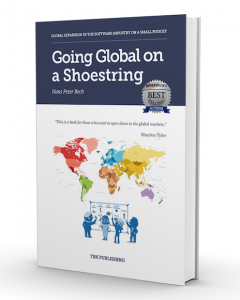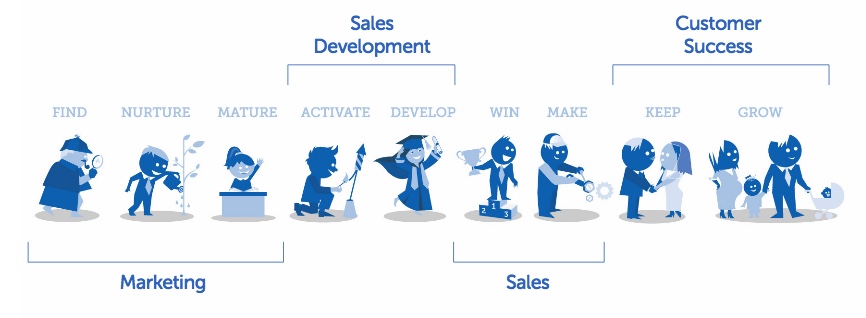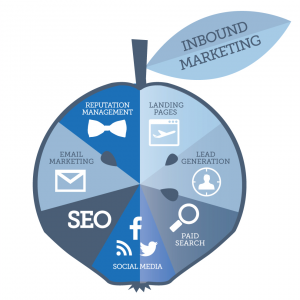Inbound or Outbound? There’s a Huge Difference.
In general, anything outbound and in particular cold calling sales activities, is expensive, associated with pronounced waste, hard to manage and challenging to scale internationally.
My recent book, Going Global on a Shoestring, is entirely focused on the challenges associated with bringing your current products into new geographic territories. Here are some of the terms I introduce in the book.
The terms global or international markets refer to foreign countries in general. It does not imply that there is a homogeneous global or international market for your product. Sometimes there is but mostly there is not. Global and international are synonyms.

A sales or purchase process is called simple when a single person makes the final decision. It’s called complex when more people are involved.
I distinguish between inside sales and outside sales. Inside sales are performed without a need to travel to the customer’s location for meetings. Outside sales travel a lot because meeting physically with customers is a crucial element in performing their job.
In the book, I distinguish between inbound and outbound marketing activities. Although these terms are used widely in the industry, they are seldom precisely defined and are often the source of much misunderstanding.
Inbound marketing is non-individualised activities that may motivate people to react. Using inbound marketing principles, customers find you. For inbound marketing activities to be productive, you must have a clear definition of your target audience. Still, you do not have each person in the audience listed by name.
Outbound marketing is individualised activities that may motivate people to react. Using outbound marketing principles, you find and reach out to the customers. For outbound marketing, you need a list with contact details for the people with whom you want to get in touch.
Inbound sales mean that you only respond to incoming inquiries. Customers contact you and initiate the dialogue.
Outbound sales mean that you make unsolicited contacts to potential customers. You contact people that haven’t asked to be contacted.
For many marketers, outbound sales mean cold calling prospects on the phone and often that is also what is needed. However, sending a personal email or InMail on LinkedIn first and then calling to follow up is also considered an outbound sales approach.
You mostly combine inbound and outbound marketing and sales activities. Only a few companies can generate enough leads exclusively through their inbound activities, and therefore they also run outbound activities.
There has been much hype around the term inbound marketing recently and the company Hubspot, the leading voice of the inbound movement, writes the following on their website:
Inbound marketing is a business methodology that attracts customers by creating valuable content and experiences tailored to them. While outbound marketing interrupts your audience with content they don’t want, inbound marketing forms connections they’re looking for and solves problems they already have.
Hubspot
Nobody should want to interrupt their audience with content they don’t want. Outbound marketing and sales initiatives can be effective when you work hard on optimising your contact lists and craft relevant opening messages and conversations. I agree that there is a lot of deplorable outbound activities going on and that it is annoying being disturbed by someone who doesn’t have a clue about what you do. Still, there is also an equal amount of poor inbound marketing.

Inbound is not better or more honourable than outbound. The mix required for generating enough leads for you to meet your revenue targets depends on numerous variables. Some companies are capable of generating enough leads through inbound means, and that’s great. Some are not and have to refine their outbound activities to fill the pipeline. It all depends on the type of product you offer, your business model environment and the skills you have represented in your organisation.
Optimising customer acquisition cost
The objective is to find the formula that gives the lowest possible customer acquisition cost. If you are on a shoestring budget, the ratio to the customer lifetime value (which may be a number that you do not know) should be around 20 per cent. If it is lower than that, then you may want to invest more in lead generation. If it is over 33 per cent, then you are spending too much.

In general, anything outbound and in particular cold calling sales activities, is expensive, associated with pronounced waste, hard to manage and challenging to scale internationally. Companies looking for shoestring approaches to foreign market entry should explore their inbound options carefully before deciding on taking a predominantly outbound route. If you do take the outbound route, then you should carefully consider how you can divide your marketing and sales processes into subprocesses that can be performed by specialised people. Finding people that can complete the entire revenue generation process from lead identification to closing is almost impossible or at least very hard to accomplish.
The channels and platforms for inbound lead generation are changing dramatically, which may make mastering outbound marketing and sales activities more critical. I recommend you read David Heinemeier Hansson’s testimony on Online Platforms and Market Power, which lays out how the playing field is changing.
The term conversion rate is a measure used in marketing and sales to express the performance of an activity in the revenue generation process. You convert downloads of a white-paper to active leads. You convert various marketing activities to seminar attendees. You convert prospects to customers. And so on. Defining conversion-points and collecting data to measure performance is crucial for monitoring and optimising the revenue generation process as you enter a new country.
I distinguish between the customer’s buying journey and the purchase process. The buying journey includes all the steps a customer goes through from coming across our brand to concluding the purchase. The purchase process refers to the final and formal part of that journey where the customer organises the project evaluation and the vendor selection.
This post is an excerpt from my new book Going Global on a Shoestring.







